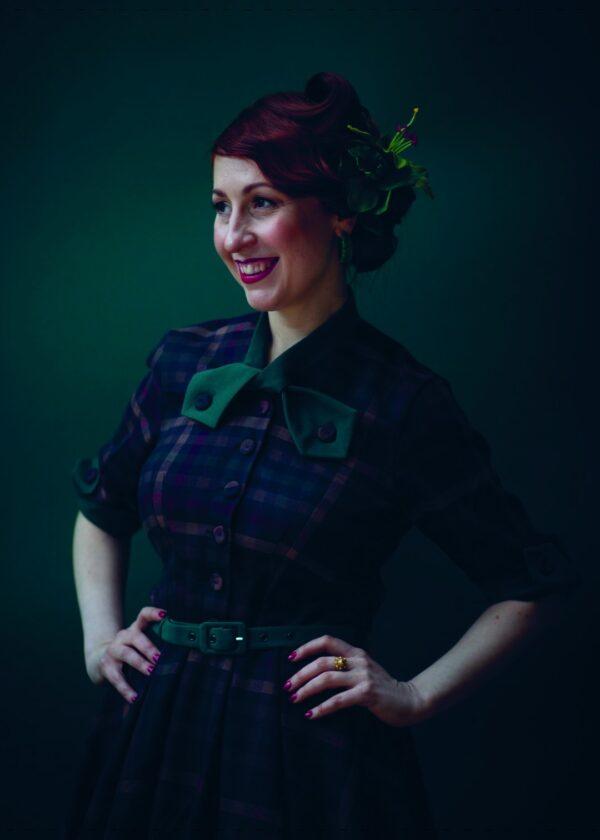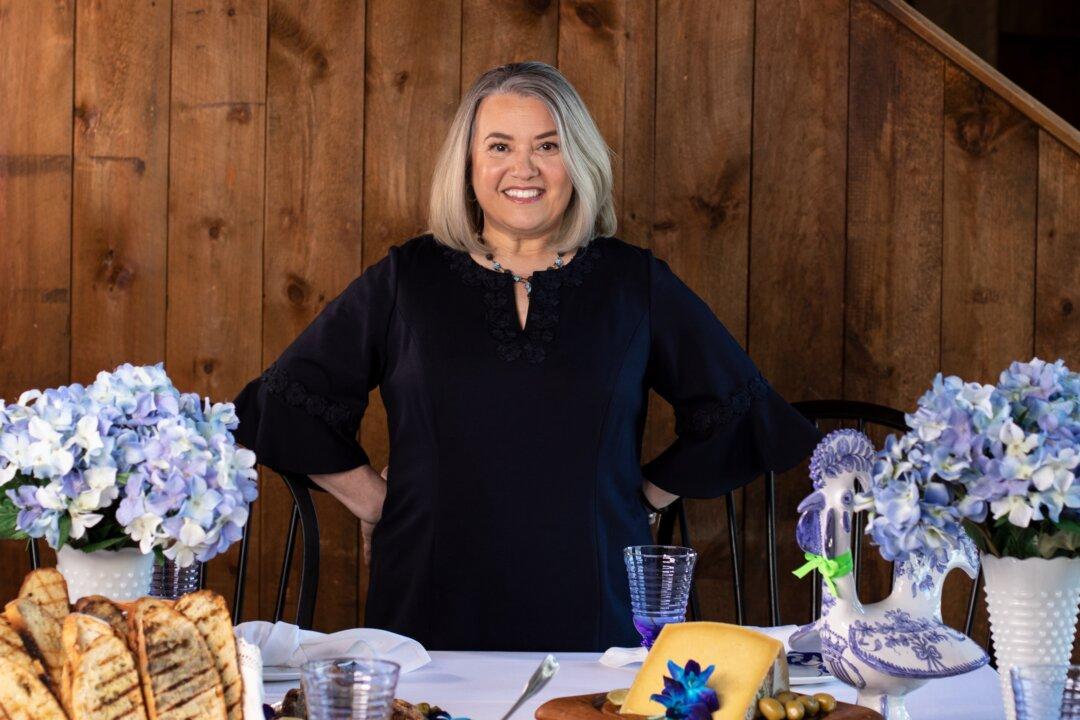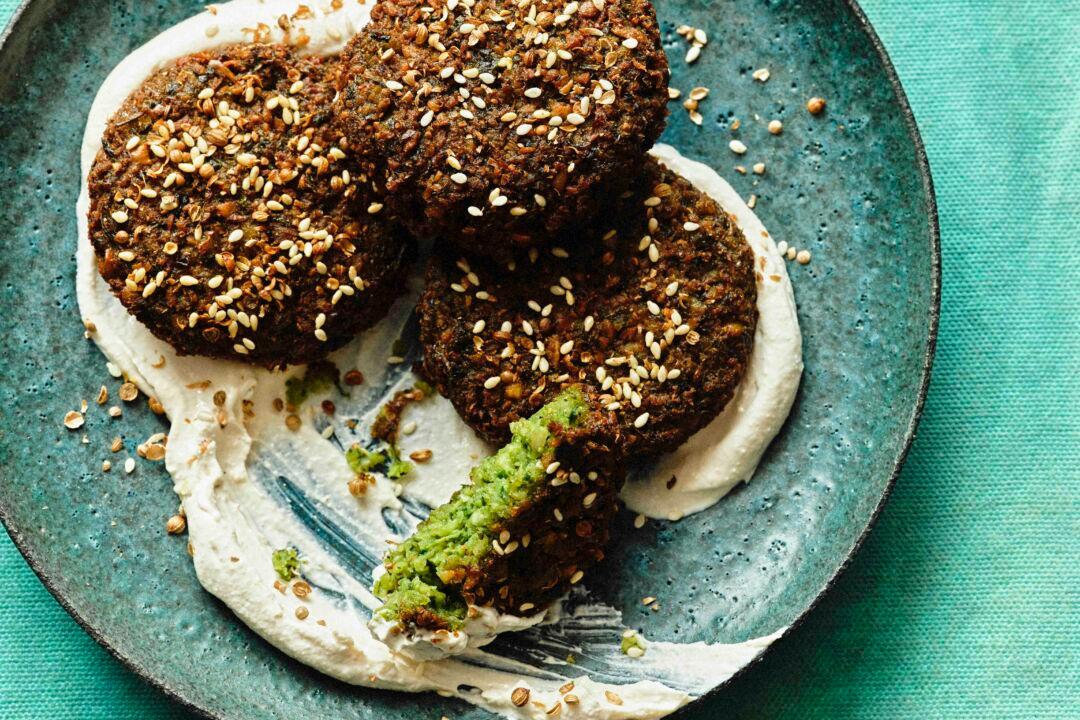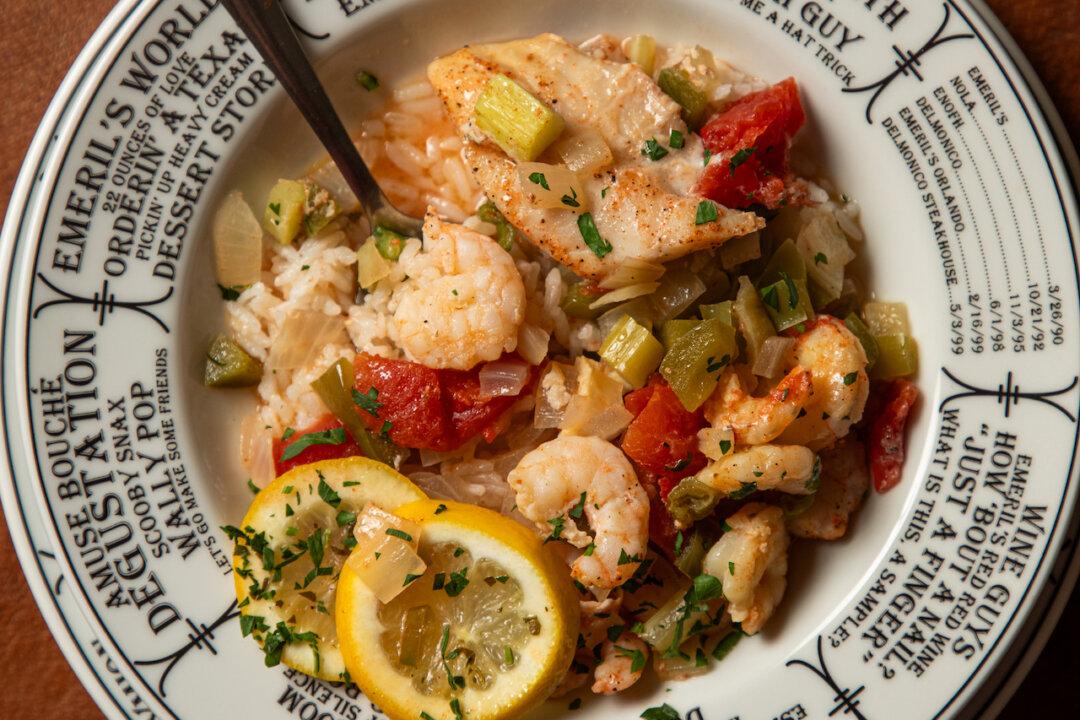White swans, black swans, Will you sail to England with me? England is locked The key is broken And there is no blacksmith in the country Who could repair our key Let them pass, Let them pass And the last one we will catch.Ysewijn, a food historian, author, and photographer, learned this rhyme as a small child, skipping rope in her native country of Belgium.

Upon hearing it, “I was besotted,” said Ysewijn. “I knew I had to go to England. ... I started basically asking for every Christmas and birthday if we could go to England.”
When she was 9, her parents granted her wish, and they went to England for the first time—and then every holiday after that.
What Ysewijn recalls most about those trips is the way the food fascinated her.
“The food worked in my head,” she said. “It worked. We ate out at a lot of pubs, and there was an enormous amount of diversity on the British pub menu.”
That included a lot of Indian-inspired foods, due to Britain’s connection with India. Ysewijn recalls one holiday where she had chicken curry for the first time: “It blew my mind. I mean, it did things in my mouth and my head and mind—it was magical.”
“I traveled around England thinking about food all the time,” she said. “I had breakfast and started thinking about lunch.”
A budding baker, Ysewijn became an astute learner of Britain’s distinct food scene when she was still a child, peering through bakery windows to see what they offered, ordering soup for lunch and writing down what type of bread came with it (the British have more than seven names for bread).
At home in Belgium, Ysewijn searched for the flavors of England. She learned to bake a pound cake, then began watching Jamie Oliver. She learned, as she baked, that food was something to be enjoyed, not simply eaten to survive.
In the years since, she’s continued to bake and research, and has published several books on British baking. Her latest, “The British Baking Book: The History of British Baking, Savory and Sweet,” highlights the rich heritage and culture of British cooking, documenting local specialties and delving into the stories behind some of Britain’s most popular bakes.

Pride and Culture
Why should a Belgian write a book on British food and culture? Ysewijn makes an excellent point: “From an outsider, looking in, you can see the food culture differently. You can see what’s different in that culture from your own culture.”What’s different, Ysewijn emphasizes, is the pride.
Ysewijn noticed, even as a child, the pride that the British take in serving distinct, well-made food: local sausage, fresh produce, and other quality ingredients. She found herself drawn to British food because of the thoughtful way in which it was made. It was always good because they cared about the quality of what they served.
The theme of pride and ownership in one’s food and its history echoes throughout the book, especially in the recipes distinctive to each region of Britain.
Take the Cornish pasty, a semi-circular pie traditionally filled with meat, potato, onion, and turnip, eaten by fishermen and miners of Cornwall, a county on the southwest coast of England known for its stunning cliffs and scenery. In 2011, Cornish pasties were granted a Protected Geographical Indication (PGI) status. A pasty can now only be called a Cornish pasty if it’s made in Cornwall, has the shape of a D, and is made with shortcrust dough and a crimped edge, among other specifications.
Other regional bakes include Bath buns, rich with butter and decorated with caraway comfits; Yorkshire tea cakes, round, brioche-like buns with golden tops; and bannocks, griddle-baked quick breads from Northern England, Northern Ireland, and Scotland, made with a mixture of oats, rye, and barley from their harvest. The key crops of specific regions in Britain—oats and barley in the harsher, wetter north, and wheat in the warmer, drier center and south—influenced their signature, regional bakes.

With British food, pride has always been a factor. Ysewijn told a story of a French visitor to England in the 17th century who kept a diary about his visit to England. He marveled at the way the English took pride in their animal husbandry—breeding and caring for their animals—and how that pride resulted in excellent roast beef. Over the centuries, the British have hung on to their heritage—including their landscape.
In the north of England, for instance, there are herds of sheep that have been there for hundreds of years, with knowledge of the landscape, that know how to survive.
“Other sheep wouldn’t survive the weather elements there,” Ysewijn said. Because the sheep have been a priority to the culture, they are still there today.
Preserving History
In a field such as food history, Ysewijn is all too aware of how quickly recipes can change. Take, for example, the Bakewell tart, a dessert made with shortcrust pastry, jam, and a dense almond filling, topped with flaked almonds.“I’ve been obsessed with Bakewell tarts for years,” said Ysewijn. “It’s fascinating to see how something can change in five years. A bakery is bought by someone else. They change the Bakewell tart a little bit, and the recipe is changed forever.”
Today in Britain, the “cherry Bakewell”—a mass-produced supermarket version, topped with smooth white icing and a lone cherry—has risen in popularity. True to the dessert’s history, Ysewijn’s version isn’t iced.
“I try to catch things before they disappear into oblivion,” she said. Ysewijn cares about preserving the history and identity of the bakes she writes about. “I try to communicate this information in plain English.”

Indeed, Ysewijn’s book is written in a delightfully digestible way. Filled with beautiful pictures and designs, as well as interesting anecdotes about Britain’s rich culinary history, it’s hard to put down.
The biggest gift for me, in reading this book, was the way it connected me once again to the forgotten foods of my childhood. As an American raised by English parents, I was thrilled to discover once again foods I’d had during trips to England: bacon baps and butties on the Dover cliffs with my grandparents, cheddar scones outside of Walmer Castle, a Chelsea bun with a cup of tea in my auntie’s garden.
Baking these foods in my own kitchen, especially in a time when England is closed to me, made me feel like I was unlocking again the important foods of my childhood and family.
Ysewijn possesses a knowledge of British culture and heritage that might surpass that of most native Britons. By documenting and sharing so much of the nation’s history and identity around its food in her book, she has become the blacksmith of the childhood rhyme that drew her to England in the first place—and has mended for all of us a key.





